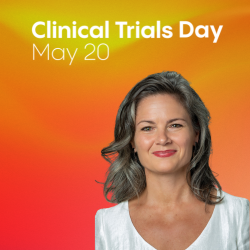Sponsors hoping to increase minority participation in clinical trials might want to cast a wider net when looking for community-based site partners, says Liz Beatty, chief strategy officer at Inato.
“Sponsors go to the same sites over and over again, and they are missing out on others” with sturdy local roots in underserved communities, Beatty notes.
The keys to success for promoting diversity in clinical trials are “time, trust, and respect,” Beatty says. Her organization’s community-based approach boasts some solid statistics:
- Of Inato’s U.S.-based clinical trial sites evaluated, 41.5% have more than 13% Black patients.
- 40% of patients at its Florida clinical site are Black.
- 100% of patients enrolled in a vaccine trial in Michigan were Black, which led to over-enrolling African American patients.
- A Maryland-based site has access to a patient population made up of 90% Black individuals.
“It’s all under our control [as an industry] to shape protocols and reduce barriers” to greater trial participation, Beatty says. “We can find trial sites closer to patients, [and] we can limit the number of visits and procedures” so as not to present potential patients with intimidating burdens that discourage their participation, she says.
Inato finds local site partners that have strong reputations and that help bring in new potential patients, Beatty says. “These local partners take the time to build trust, earn respect, answer questions, and help guide patients through the decision-making process” without rushing them, she says.
Effective local sites “know the steps to take, [and] how to bring in family members and make them part of the discussion,” Beatty says. “It’s all about making the right experience for patients, building trust, and valuing relationships,” she adds.
These community-based sites also approach their patients and the community in a holistic manner, and not on a trial-by-trial basis, Beatty notes.
“There are big barriers to diversity we must address as an industry,” she says. For example, she notes that there’s undoubtedly an “unconscious bias” whereby patients in underserved populations and parts of the country aren’t educated about clinical trials. “We have to let the person decide if a trial is right for them” and not assume they won’t be interested, she adds.
“Everyone should be part of the conversation” when it comes to clinical trial participation, Beatty says.
Author: Michael Causey



